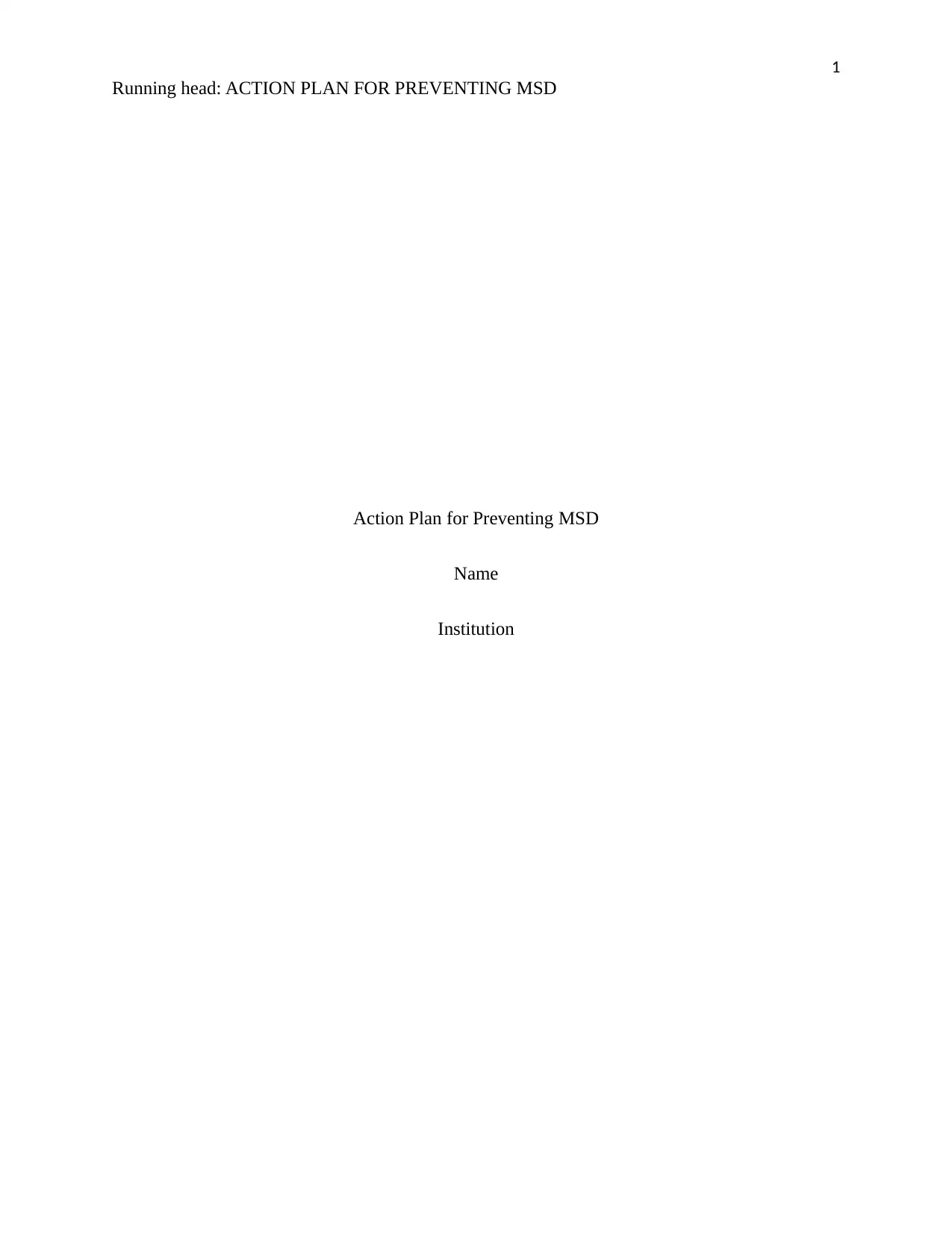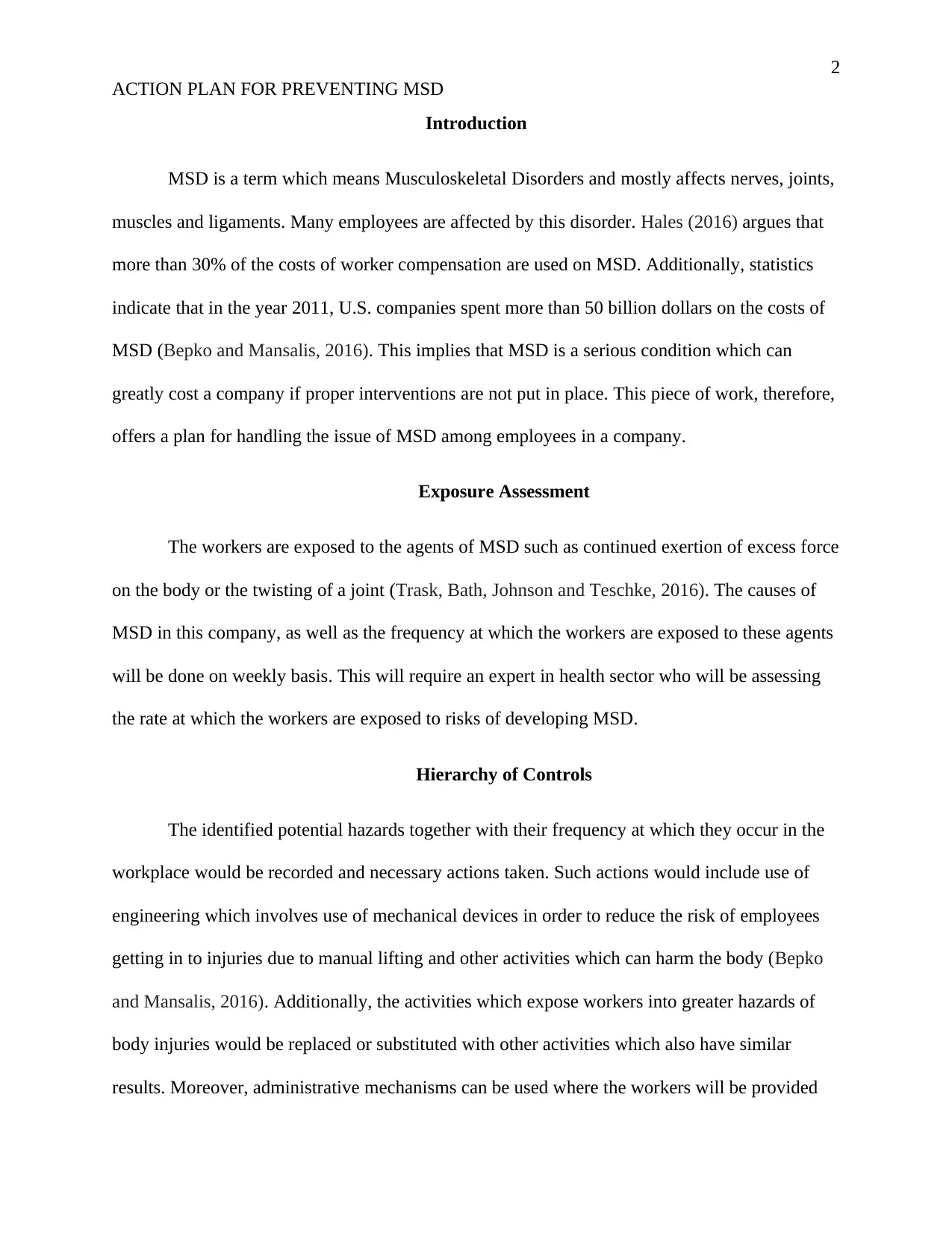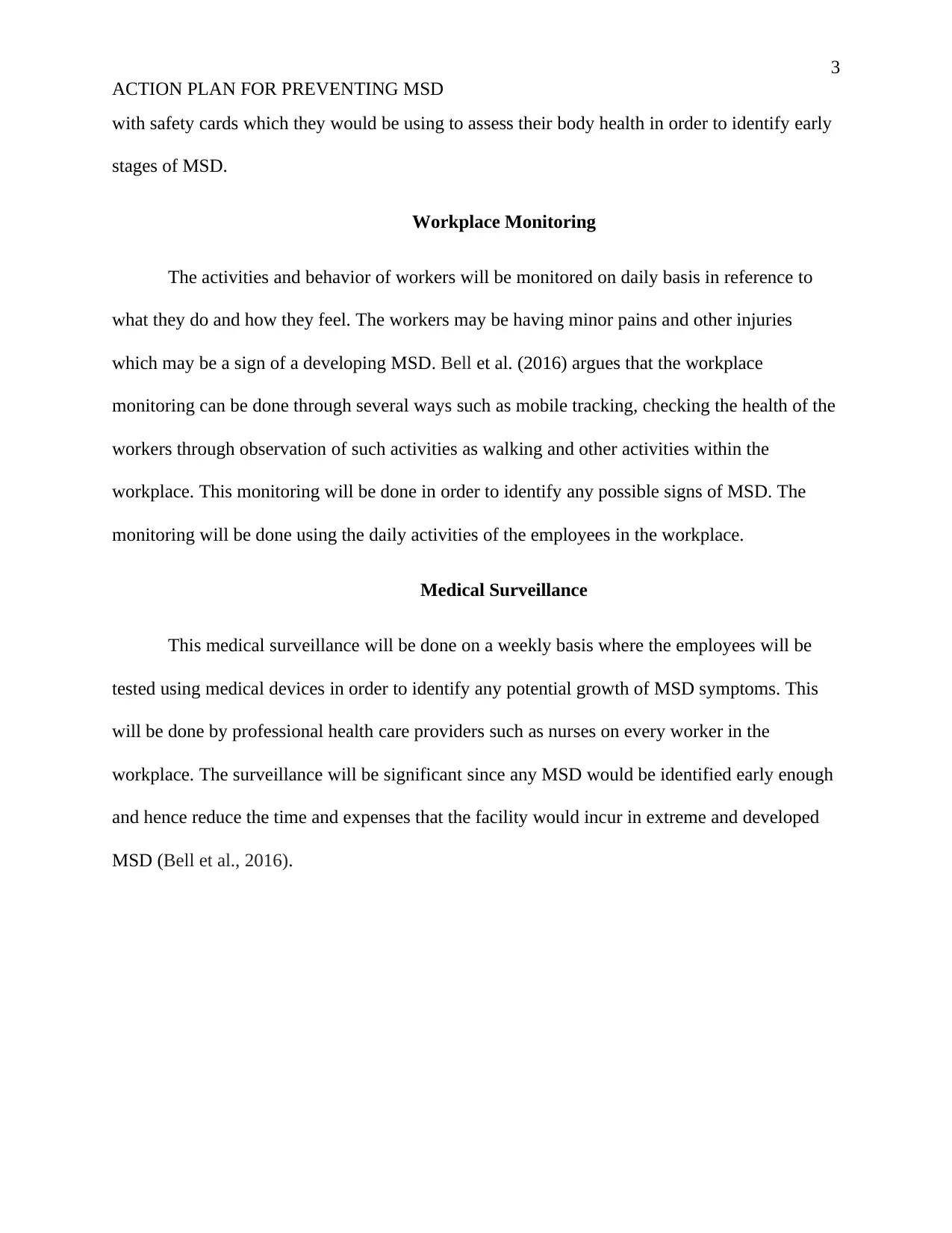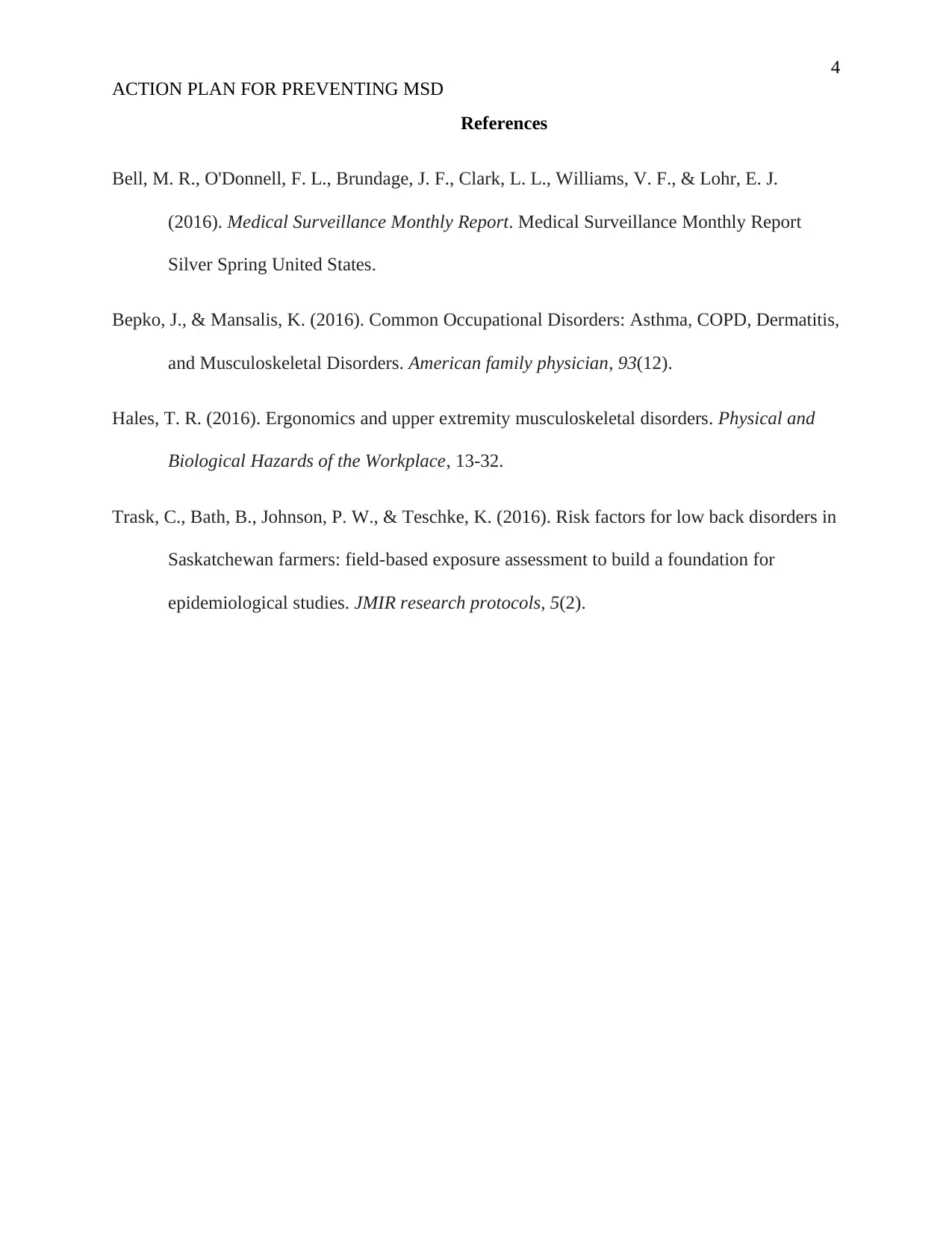Action Plan for Preventing Musculoskeletal Disorders: Exposure Control
VerifiedAdded on 2023/04/05
|4
|646
|473
Report
AI Summary
This report presents an action plan designed to prevent musculoskeletal disorders (MSD) among employees. It begins by defining MSD and highlighting its significant costs to companies. The plan includes a weekly exposure assessment conducted by a health expert to identify MSD agents and their frequency. A hierarchy of controls is proposed, emphasizing engineering controls like mechanical devices to reduce manual lifting risks, substituting hazardous activities, and administrative mechanisms such as safety cards for self-assessment. Daily workplace monitoring of worker activities and behaviors is recommended to detect early signs of MSD, supplemented by weekly medical surveillance performed by healthcare providers to identify potential MSD symptoms early on, thereby minimizing long-term expenses. This comprehensive approach aims to create a safer work environment and mitigate the impact of MSD.
1 out of 4










![[object Object]](/_next/static/media/star-bottom.7253800d.svg)